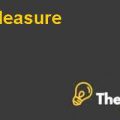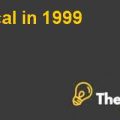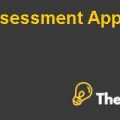Cheater Inc.’s Controls Case Study Solution
Introduction:
Cheater Inc. is a public listed company operating in the USA, Cheater Inc. have to follow various laws and regulations which are imposed by the national government and SEC as listing requirement.The main laws and regulations which are imposed because of the listing are the adherence to Sarbanes Oxley Act, auditing requirement and financial reporting requirements.
As a public listed company it is compulsory for Cheater Inc. to fulfill all the provisions and sections of Sarbanes Oxley act, failure to do so will result in heavy fines and penalties. As the Sarbanes Oxley act is a rules based approach, the Cheater Inc. must have to follow all the provisions of the act. In addition to this, the Cheater Inc. must have to prepare the financial statements of the company in accordance with the generally acceptable accounting practices (GAAP).
This is also mandatory for the Cheater Inc. because of the public limited status. Not only they have to prepare the financial statements according to the US GAAP but the management must also have to hire an external independent auditor to audit the financial statements in order to give reasonable assurance to the shareholders and regulatory authorities that the financial statements are free from material misstatement.
In order to carry the audit, the shareholders have selected an audit firm to conduct the audit of financial statements, the planning materiality set by the auditor is $3.75 million. The audit engagement team have identified three risk of material misstatement in the revenue, the audit engagement team have performed initial testing regarding the controls and they have shown positive indications regarding the controls.
Engagement team’s assessment:
It can be said that the assessment of audit engagement team regarding the control for the risk is appropriate, the internal control system is highly automated which inherently reduces the risk of material assessment. Usually the systems which are manual or require human operation contains high risk of material misstatement as compare to the systems which are automated and require no human intake. Sales are automatically recorded according and the invoices are also generated automatically based on the scanned goods which are to be dispatched.
However, there is a chance that the goods are not scanned are also dispatched, the goods cannot be traced if they are not scanned and the management will never know about the goods which are not scanned. Consequently, the revenue will be understated. But, there was no issue reported like this in the past which depict the lower chances of un-scanned goods being dispatched.
For the second risk, the engagement team’s assessment is inappropriate to some extent, as the internal control system is manual and require the human involvement and effectiveness of the system cannot be guaranteed. Furthermore, there is only a single individual involved in the verification of the occurrence of the sales, it is highly likely that the individual would fail to identify the fictitious sales either due to error or deliberate fraud. Although the warehouse director is very experienced and is not involved in any discrepancy but it cannot be guaranteed that the director cannot commit any fraud or error.
Moreover, the control requires the judgment of the director which also undermine the credibility of the system. Not all the transactions are identified by the directors, only the transactions which don’t have any shipping records and unusual transactions are reviewed, it is possible that the fictitious sales are occurring on a pre-planned pattern which is in line with the usual sales transactions.
For the third control it can be said that the assessment of the engagement team is not appropriate, there are many loopholes that make the system fail to identify any wrongly charged transactions. The process is totally manual which reduces the effectiveness of the systems, furthermore, the transactions are verified almost after one month which can increase the chances that wrongly recorded transactions are not rectified.
Additionally, if wrong or inappropriate targets are set by the top management, it is highly likely that the wrongly recorded transactions are not identified. The most prominent loophole of the system is that it can only detect transactions which are above the threshold of $4.5 million, it can be argued that there are many transactions below this threshold which will not be reviewed and analyzed by the management leading to material misstatements in the financial statements. The transactions are also wrongly recorded just below this threshold by the perpetrator of fraud and these transactions will also be undetected.
Risk associated with each control:
For the first control the audit engagement team concluded that the risk associated with the control is not higher, it can be said that the management is right in this assessment. In the very rare cases, the management deliberately reduce sales, in almost all the cases the management increases the sales revenue and wants to charge for the goods which are not ordered or deliver rather than not recording the goods which are delivered...................
This is just a sample partial work. Please place the order on the website to get your own originally done case solution.












